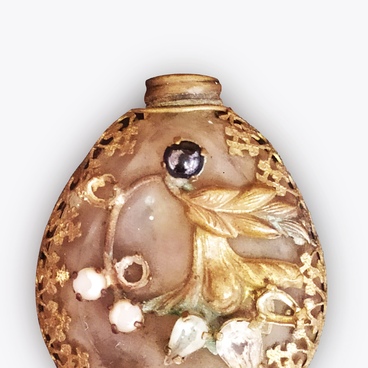This early 20th century wallet, now in the collection of the museum, belonged to a participant in the Civil War, a resident of Kótlas, who had his own leather shop in the village of Zhernakóvo. It is a shabby wallet, made of brown leather, closed with a metal lock in the form of a ball.
For many centuries, a variety of objects served as money for mankind: stones, shells, beads, knots on ropes. And all of these needed a container for storage and transport. At a time when there were no wallets or pockets on clothes, people wore banknotes in a headdress, on their bosom or behind their bootleg, or even simply hung them around their necks or outer clothing.
The first wallets, in their size and function, were more like bags or pouches. Usually they were canvas, and made of a linen fabric. In Russia, such a bag was called a purse, and this word later began to symbolize great wealth. Corresponding turns of speech also appeared: shake the purse, fill the purse, a tight purse. Often, a thick leather belt the width of a palm, made with an inner lining, acted as a wallet. Money was kept inside it. The closure was a buckle, or sometimes a clasp. The ancient Romans were the first to make small leather wallets. For wealthy people, such wallets were encrusted with precious stones and embroidered.
From the 16th to 17th centuries, a wallet on a belt was typically an attribute of women’s clothing. Women wore a wallet under their top skirts, where a special cut was made for convenience. The men’s wallet changed dramatically when clothes with pockets appeared. A roomy wallet is a thing of the past.
In the XX century, small wallets appeared with clips or a factory-made button of artificial materials. Coin holders came into use, into which coins of different sizes and denominations were pushed with one finger. Handicraft also had not lost its popularity. For example, small wallets, knitted or embroidered with beads by needlewomen, were popular. Over time, wallets became more diverse in the types of models and materials. The most expensive ones were made of leather, including the skin of exotic animals, and often adorned with precious stones or loose Swarovski crystals.
For many centuries, a variety of objects served as money for mankind: stones, shells, beads, knots on ropes. And all of these needed a container for storage and transport. At a time when there were no wallets or pockets on clothes, people wore banknotes in a headdress, on their bosom or behind their bootleg, or even simply hung them around their necks or outer clothing.
The first wallets, in their size and function, were more like bags or pouches. Usually they were canvas, and made of a linen fabric. In Russia, such a bag was called a purse, and this word later began to symbolize great wealth. Corresponding turns of speech also appeared: shake the purse, fill the purse, a tight purse. Often, a thick leather belt the width of a palm, made with an inner lining, acted as a wallet. Money was kept inside it. The closure was a buckle, or sometimes a clasp. The ancient Romans were the first to make small leather wallets. For wealthy people, such wallets were encrusted with precious stones and embroidered.
From the 16th to 17th centuries, a wallet on a belt was typically an attribute of women’s clothing. Women wore a wallet under their top skirts, where a special cut was made for convenience. The men’s wallet changed dramatically when clothes with pockets appeared. A roomy wallet is a thing of the past.
In the XX century, small wallets appeared with clips or a factory-made button of artificial materials. Coin holders came into use, into which coins of different sizes and denominations were pushed with one finger. Handicraft also had not lost its popularity. For example, small wallets, knitted or embroidered with beads by needlewomen, were popular. Over time, wallets became more diverse in the types of models and materials. The most expensive ones were made of leather, including the skin of exotic animals, and often adorned with precious stones or loose Swarovski crystals.

